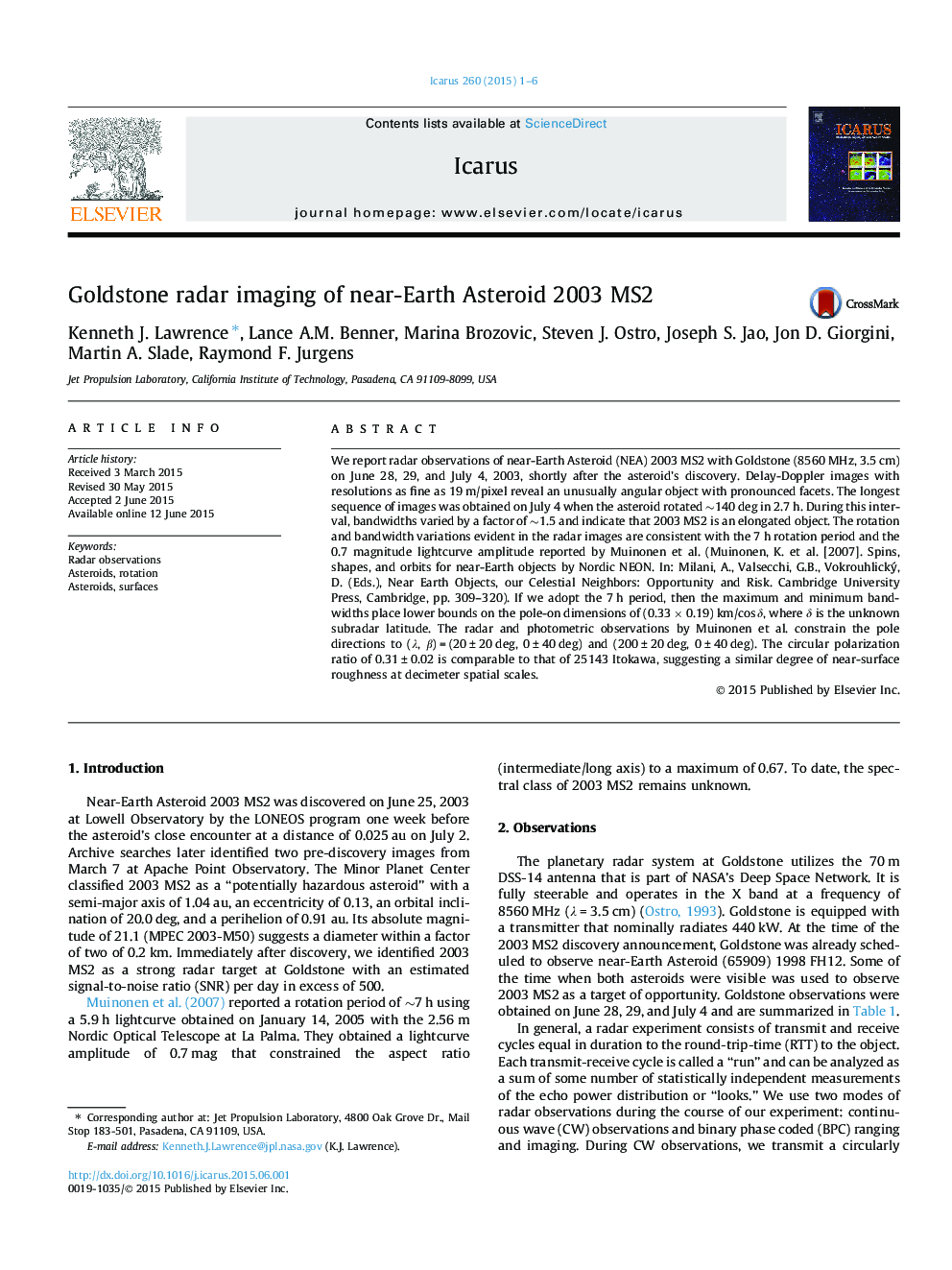| Article ID | Journal | Published Year | Pages | File Type |
|---|---|---|---|---|
| 8135954 | Icarus | 2015 | 6 Pages |
Abstract
We report radar observations of near-Earth Asteroid (NEA) 2003 MS2 with Goldstone (8560 MHz, 3.5 cm) on June 28, 29, and July 4, 2003, shortly after the asteroid's discovery. Delay-Doppler images with resolutions as fine as 19 m/pixel reveal an unusually angular object with pronounced facets. The longest sequence of images was obtained on July 4 when the asteroid rotated â¼140 deg in 2.7 h. During this interval, bandwidths varied by a factor of â¼1.5 and indicate that 2003 MS2 is an elongated object. The rotation and bandwidth variations evident in the radar images are consistent with the 7 h rotation period and the 0.7 magnitude lightcurve amplitude reported by Muinonen et al. (Muinonen, K. et al. [2007]. Spins, shapes, and orbits for near-Earth objects by Nordic NEON. In: Milani, A., Valsecchi, G.B., Vokrouhlický, D. (Eds.), Near Earth Objects, our Celestial Neighbors: Opportunity and Risk. Cambridge University Press, Cambridge, pp. 309-320). If we adopt the 7 h period, then the maximum and minimum bandwidths place lower bounds on the pole-on dimensions of (0.33 Ã 0.19) km/cos δ, where δ is the unknown subradar latitude. The radar and photometric observations by Muinonen et al. constrain the pole directions to (λ, β) = (20 ± 20 deg, 0 ± 40 deg) and (200 ± 20 deg, 0 ± 40 deg). The circular polarization ratio of 0.31 ± 0.02 is comparable to that of 25143 Itokawa, suggesting a similar degree of near-surface roughness at decimeter spatial scales.
Related Topics
Physical Sciences and Engineering
Earth and Planetary Sciences
Space and Planetary Science
Authors
Kenneth J. Lawrence, Lance A.M. Benner, Marina Brozovic, Steven J. Ostro, Joseph S. Jao, Jon D. Giorgini, Martin A. Slade, Raymond F. Jurgens,
